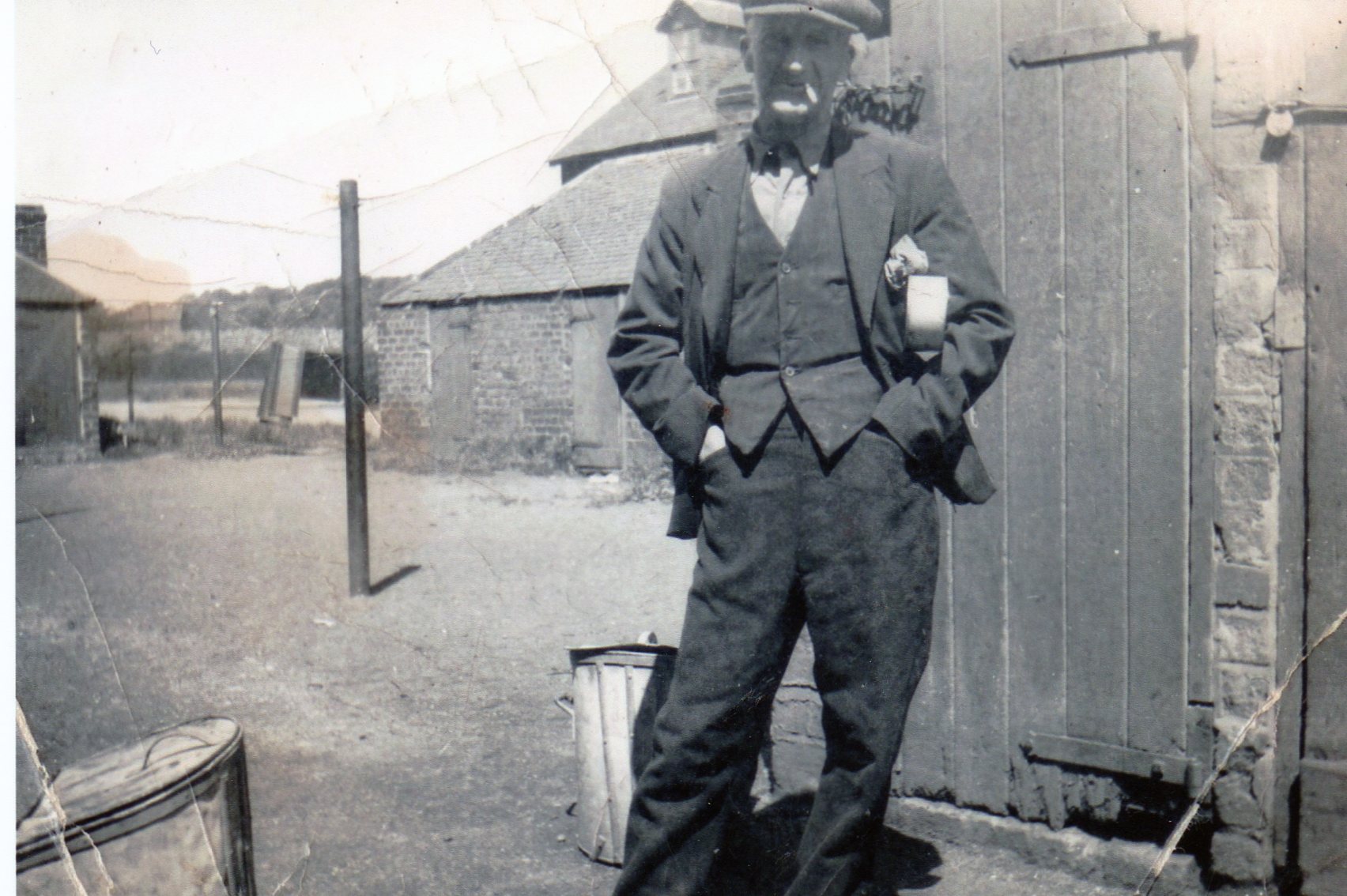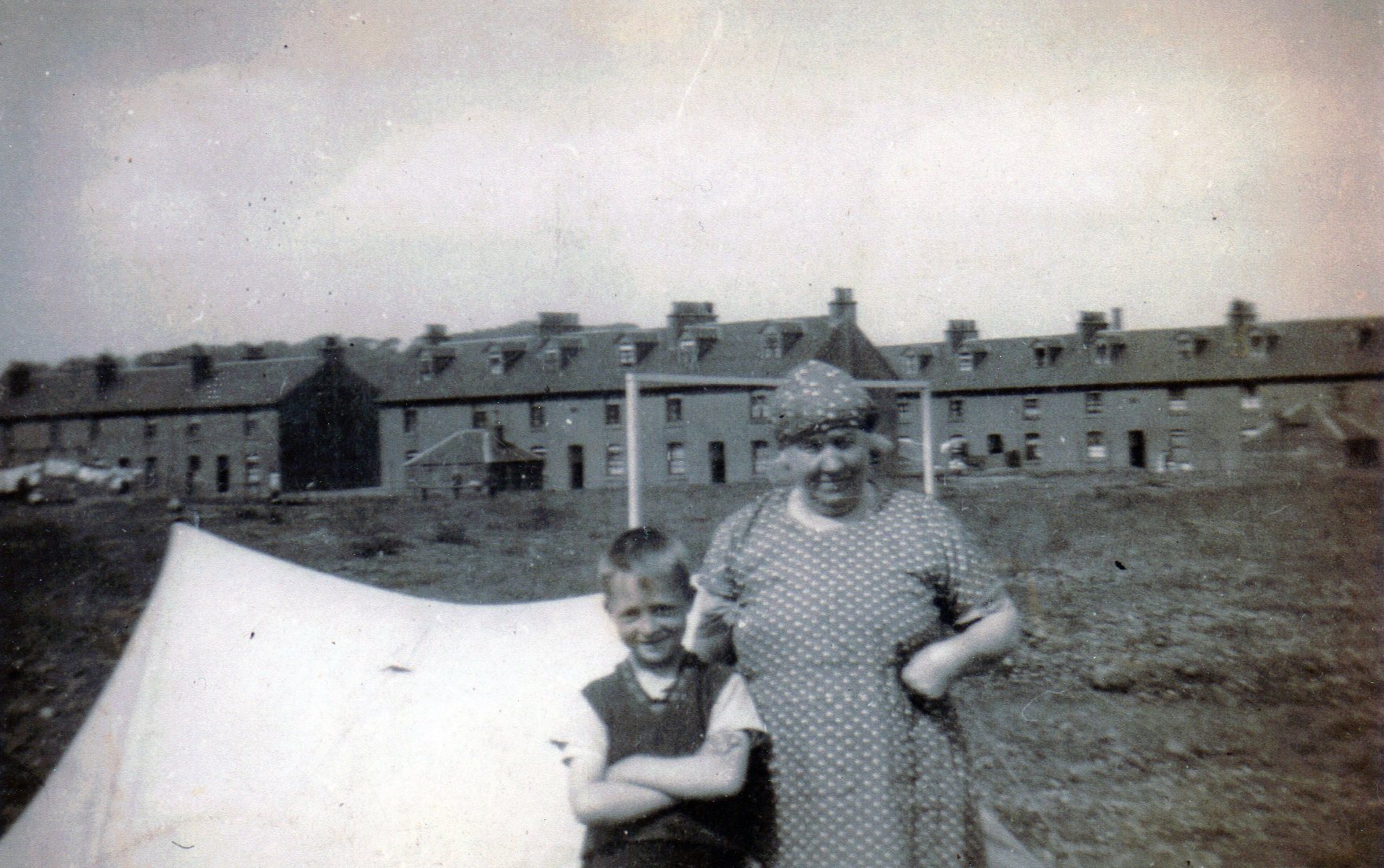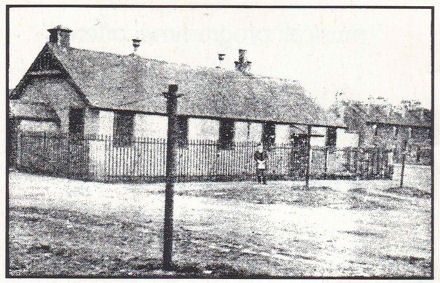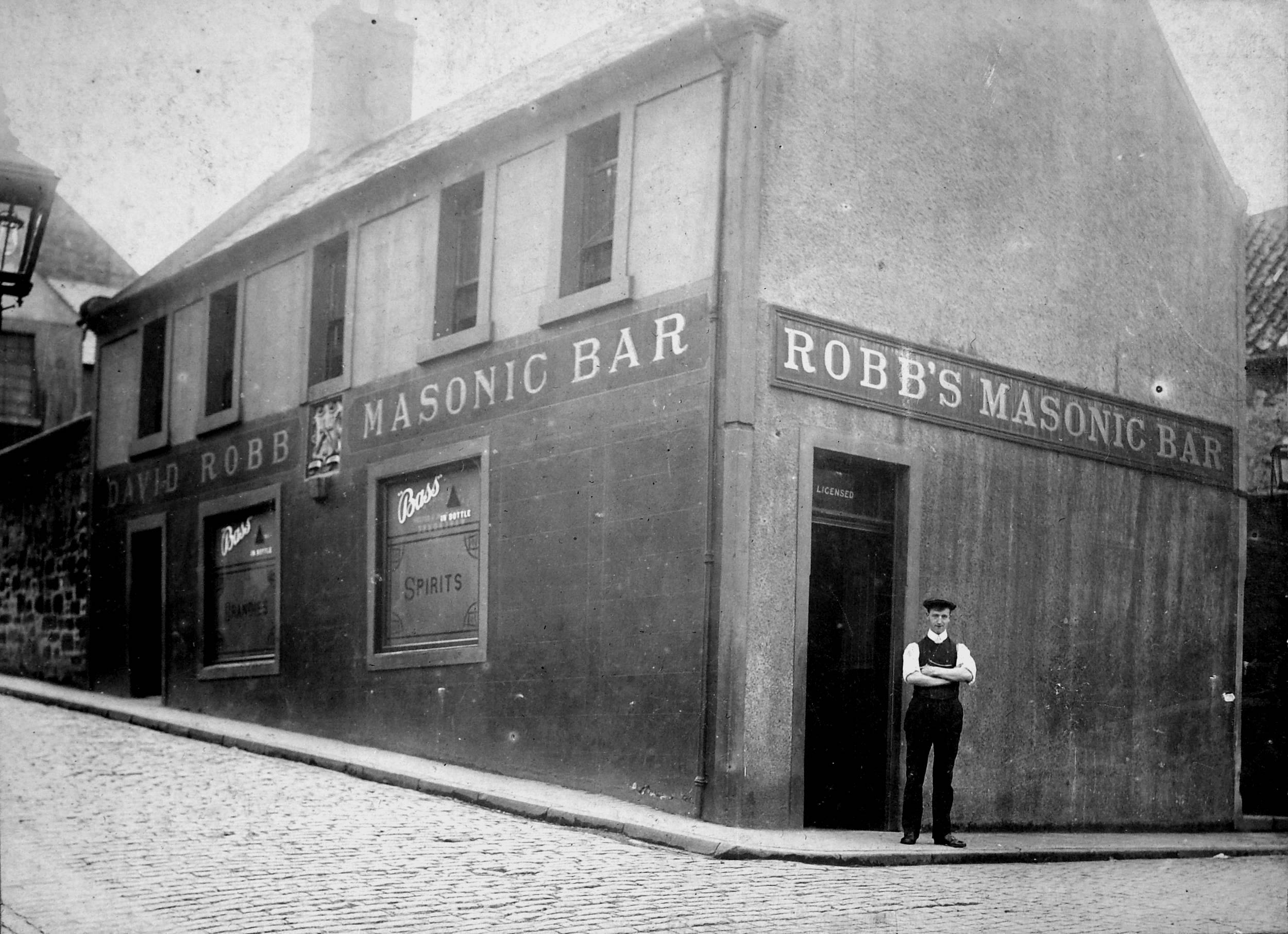The Hidden Histories: Lost Villages project interviewed people who had lived in the village of West Carron as children around the 1940s and 1950s. Here David Glen, who also lived in West Carron at that time, tells us about how the village emerged, what it was like living there, and what became of it, drawing on the memories of local people. You can read about Dawson Mission Hall and other Village Memories in the Hidden Histories Collection.
Housing in the 1700s
A detail in the Carron Company/Bruce of Stenhouse feu plan of 1761 shows two rows of houses, both recessed at their centres to form a “square”. These were named “Carron” and are shown in the area latterly known as Wester or West Carron. The original name for this area, as shown on Roy’s map of c.1750, was “Bogside”, a part of the Stenhouse Estate. The Carron Company Minute books of 1763-1774 details the building of additional housing, although the “north row” was never built.
Housing in the 1800s
Further housing may have dated to the early 19th century. Following the Sanitary Authority’s condemning of the Nailer Row (which stood on the site of present-day Carron School in Alloa Road) as unfit for habitation, newer accommodation was developed in West Carron. An article in the Stirling Journal & General Advertiser (12th November 1858) entitled “The Rise and Progress of Carron” described West Carron houses as:
the fine row of double-storied dwelling houses in Wester Carron, - a row of workmen’s dwellings, by-the-way, which we have never seen surpassed for substantiality, ventilation, elegance, comfort and accommodation at any great public work either in Scotland or England.
fields['text']) echo $section->fields['text']; ?>
Four two-storey blocks were built to the north of the old row and others followed in 1896. You can see a school at West Carron on the OS map of 1860, but not much is known about it, apart from the fact that it was an “adventure school” for about 75 pupils, and belonged to Carron Company. According to the 1881 census, 76 families lived in West Carron, including “greatly extended” families of nephews, grandchildren, and boarders, totalling 380 inhabitants.
The newer blocks (the reddish-coloured buildings of recent memory) had gas and running water, whereas the older houses were served by six “water taps” and oil lamps. The new kitchens included bed recesses and were heated by a Carron Company range cooker. Kitchen waste was collected in the “broke barrel” with weekly collections from the local piggery (near the Carron Bridge Inn) to feed the pigs.
The Wireless
The “streets” (which were constructed of slag or dander) around the newer blocks were eventually lit by electricity supplied from the Carron work’s power station, as was the road into the village, but the older houses never had that luxury. This didn’t stop later residents owning a “wireless set” (radio) which ran on an accumulator (battery). Jim Millar remembers being sent as a very young boy to a shop to get the accumulators for the wireless recharged, probably at Young’s Castle Garage, in Bainsford. One enterprising man had a mains-operated radiogram which he plugged into one of the street lamps outside his house!
Provisions and Amenities
There were coal houses, toilets (shared by approximately four households), and a wash house adjacent to the properties. Washing days were by agreement with all the families. Jim Millar remembers his family’s day being a Monday. Each tenant had their own tub and stand, scrubbing brush, and green soap. You could use the tub as a shower, pouring warm water over yourself. Families of up to nine children would also wash in a tin bath in front of the range.
People bought food and goods from local tradesmen, from Bainsford (where you could get fresh bread, pastries and current cake), and the Carron Co-operative on the other side of Carron Bridge. There were daily bakery and weekly coal deliveries from the Co-operative, and bi-weekly seasonal fruit and vegetables supplies from Falkirk. The nearest shops were near the main entrance to the Carron works. As late as the early 1950s, the occasional van brought groceries to the village. There was also a post office close to the Carron works main entrance and a shop nearby in an area known as East Carron. Gas mantles for lighting could be purchased from Andrew Shearer’s shop, where I once worked as a paper boy, at the North Gates.




The Raleway & Leisure
West Carron was adjacent to the rear of the works with the railway line for the trains and ladles running nearby. In 1860 a railway bridge was built over the river and the road, and the Forbes sisters remember being able to stand on their kitchen sink and look over the fence to where the trains ran past. In the warm summers of that time, the Carron Work’s Band, whose members lived in the village, sometimes rehearsed in the area, joining the continuous din made by the work’s blowing engine and the roar of the furnaces. Children were left to their own devices when it came to entertaining themselves, but the whole locality around West Carron was an “adventure playground” including the three Carron dams or reservoirs (two of which resembled small lochs), fed by the Lade.
At about the same time, the manager’s new residence “Carron Grange” was near completion on Carronhill and the huge contrast between this abode and theirs, must have irked some of the residents. An alleyway with a corrugated fence on one side and a broken one on the other ran from the village up to the engine gates and the place where the lade turned into the large dam. The broken fences allowed children access to the slag hill where the molten waste product (slag) from the blast furnaces was dumped regularly. This area was another unofficial “playground.” I remember being allowed at the age of 10 or 12, to access the works via the main gate at West Carron, and walk to the blast furnace area via railway lines and working trains, with the intention of delivering my uncle’s “piece” (sandwiches, soup, tea etc.).
Holidays were generally spent in the village. Again the square was the main meeting place for football, rounders, baseball, tig, kick the can, hide and seek. Many a great time was spent swimming in the river Carron. Sandbanks was the shallow end of the Carron or the “chuckies” where you could swim in safe depths.
By the mid-1950s, the occasional house at West Carron was shown as “empty, uninhabitable” on the Valuation Roll, an indication that Carron Company had stopped letting the houses after they became vacant. The blocks near to the works at the entrance to the village were demolished in 1956 to make way for the new Carron Press and Fabricating Department, and what remained of the village was earmarked for demolition. This was held up due to a delay by the Stirling County Council in re-housing the tenants. In 1957 there was still 80 houses occupied and a squatter had moved into one. By the following year, only 45 house remained occupied, and by the end of that year, 17 remained. By January 1959, 15 of the remaining tenants had been allocated houses by the Local Authorities and the last two had moved to Maclaren Terrace. The last eight blocks were demolished. All that was left was the Dawson Mission standing in what once had been “the Square.” It was later relocated to its present site in Carron Road.
By David Glen.

